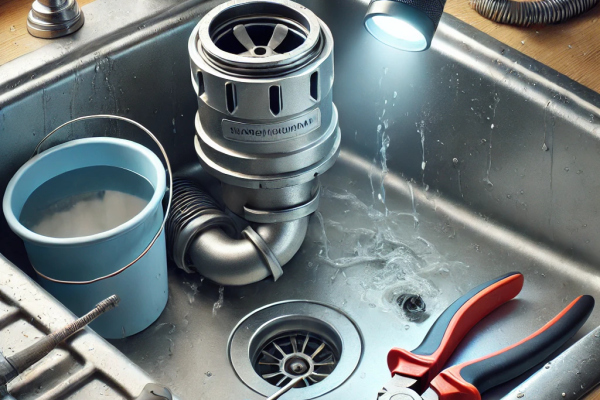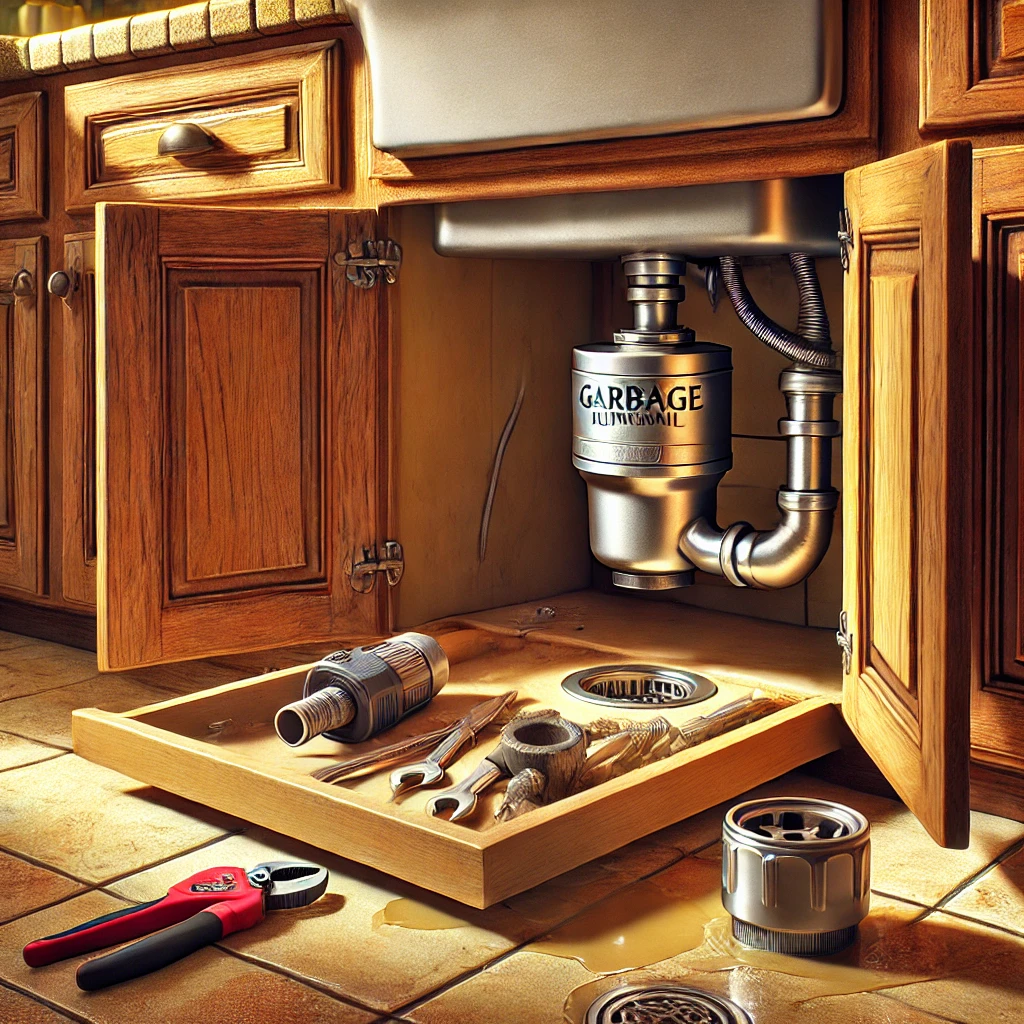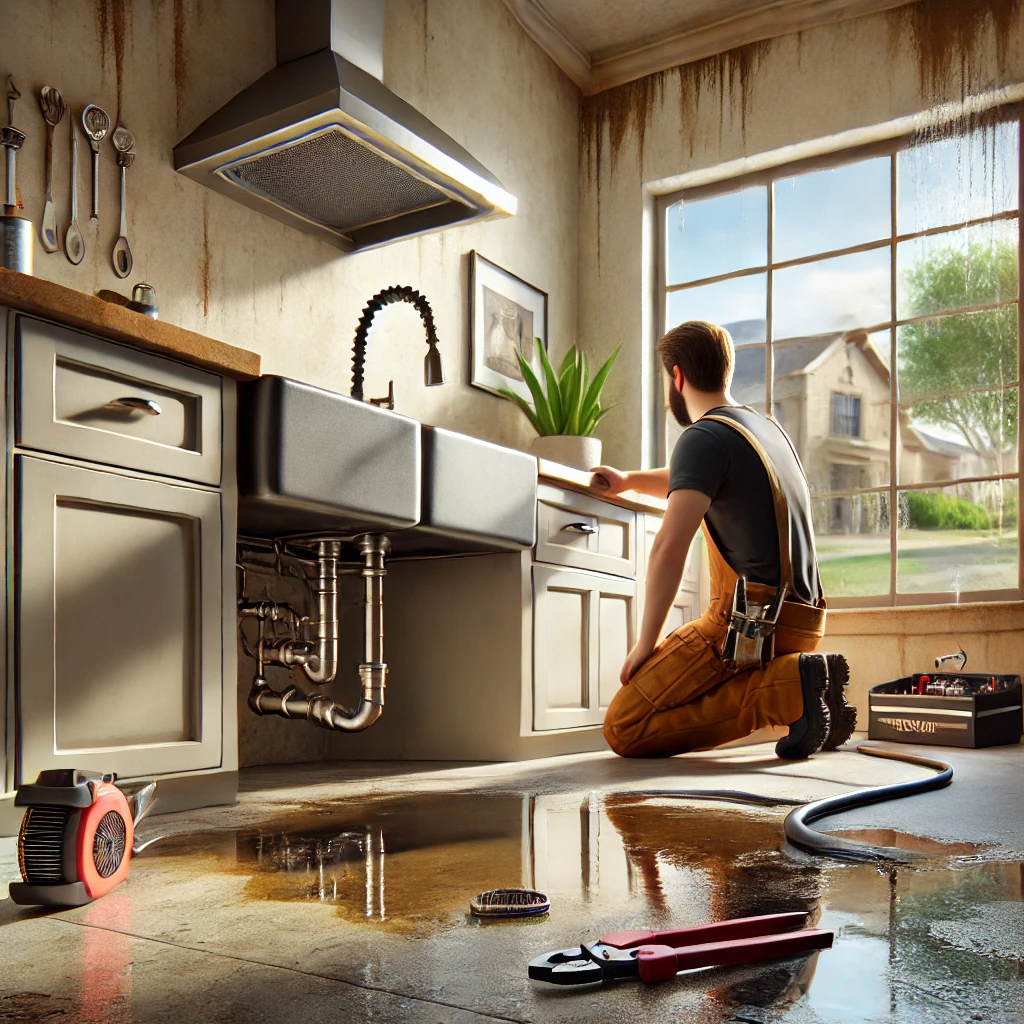
Clogs Will Not Prevail: How to Unclog a Garbage Disposal on Your Own and Avoid Costly Repairs
Clogs in the kitchen can ruin anyone’s morning. You wake up, prepare breakfast, try to wash the dishes—and suddenly notice that the water isn’t draining from the sink. Instead of the refreshing aroma of coffee, your home is filled with the unpleasant odor of rotting food scraps. Sound familiar? If so, you’re not alone. Many people in the United States—especially in Texas—rely on the convenience of a garbage disposal. But what do you do when your "faithful helper" starts acting up?
In this guide, we’ll discuss how to recognize a clogged garbage disposal, how to fix it yourself, and when to call in the pros. Plus, we’ll share common mistakes to avoid and practical tips to keep your disposal in top shape.
Why We Need a Garbage Disposal and Why It Gets Clogged
A kitchen garbage disposal makes life easier by grinding up food scraps for easy disposal. However, misuse can lead to clogs. People often throw in items like eggshells, coffee grounds, fruit pits, or grease—all of which can cause problems.
Common Causes of Clogs
- Improper Waste: Fibrous foods, bones, and grease can create blockages.
- Mineral Deposits: Hard water can leave residue that contributes to clogs.
- Overloading: Dumping too much at once overwhelms the system.
- Equipment Wear: Older disposals are more prone to issues.
Texans, take note: The hot climate accelerates decomposition, making prompt maintenance even more critical.
Main Signs of a Clog
Recognizing a clog early can save you from costly repairs. Here are key signs:
- Standing Water: Water isn’t draining, leaving murky puddles.
- Slow Drainage: Water takes longer than usual to go down.
- Unpleasant Odors: Rotting food creates persistent smells.
- Unusual Noises: Rattling or humming without grinding indicates trouble.
If clogs are frequent or accompanied by leaks, it’s time to call a professional.
Step-by-Step Guide to Unclogging Your Garbage Disposal
1. Turn Off the Power
Always disconnect the power at the circuit breaker before starting any work.
2. Inspect the Grinding Chamber
Shine a flashlight inside and use tweezers or pliers to remove visible objects. Never use your hand, even if the power is off.
3. Clean the P-Trap
Place a bucket under the pipe, unscrew the P-trap, and remove debris. Check the horizontal trap arm for additional clogs.
4. Reassemble and Test
After cleaning, reassemble the pipes and test drainage.
5. Press the Reset Button
Located at the bottom of the unit, this button can resolve minor motor issues.
6. Use a Plunger
Create a seal around the drain and make several vigorous pushes to dislodge the clog.
7. Try Baking Soda and Vinegar
Pour ¼ cup of baking soda followed by ½ cup of vinegar into the disposal. Let it foam, then flush with hot water.
Precautions and Mistakes to Avoid
- Avoid Harsh Chemicals: They can damage seals and metal components.
- Don’t Rush: Hasty actions can worsen the problem.
- Use Tools, Not Hands: Blades remain sharp even when powered off.
Special Considerations in Texas
Texas homeowners face unique challenges:
- Climate: Heat speeds up organic waste decomposition, increasing odors.
- Barbecue Culture: Fatty, fibrous scraps from grilled meats often clog disposals.
- High Usage: Garbage disposals are a standard fixture in most Texas homes.
When to Call a Professional
Know when to bring in the pros. Indicators include:
- Recurring Clogs: Persistent issues suggest deeper problems.
- Leaks: Damp spots or water under the sink require expert attention.
- Complete Failure: If the motor doesn’t hum or the reset button doesn’t help, call for assistance.
- Unusual Smells or Sounds: These can signal serious mechanical issues.
Professionals can quickly diagnose and fix the problem, often preventing more extensive damage.
Additional Preventive Tips
- Rinse with Hot Water: Run hot water for 15–20 seconds after each use.
- Avoid Pouring Grease: Let grease cool and dispose of it in the trash.
- Portion Scraps: Feed the disposal small amounts at a time.
- Regular Maintenance: Use baking soda and vinegar periodically to clean the system.
- Inspect Seals: Check for leaks and tighten or replace components as needed.
Why Act Immediately?
Delaying action on a clogged garbage disposal can lead to bigger problems, like leaks or pipe damage. In Texas, the heat can turn a minor issue into a major hygiene concern, attracting insects and creating foul odors.
Final Word: Take Action or Call a Pro
A garbage disposal is a fantastic helper, but it requires proper care. Follow best practices, act quickly when problems arise, and don’t hesitate to call a professional when needed. A little attention today can save you from costly repairs tomorrow.
In Texas and beyond, a functional garbage disposal isn’t just a convenience—it’s a cornerstone of a clean, comfortable home.






